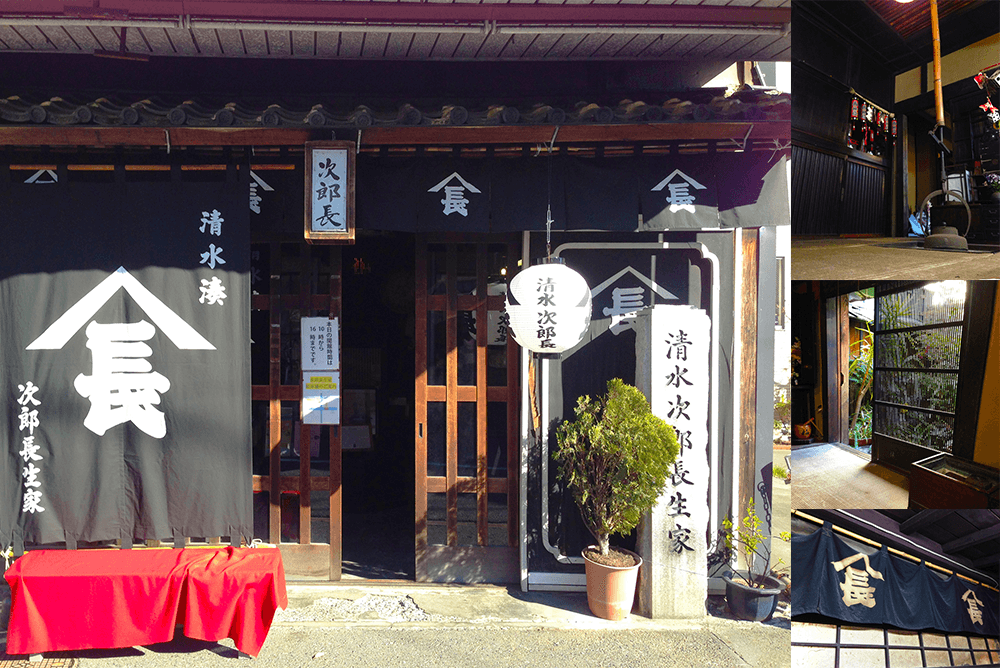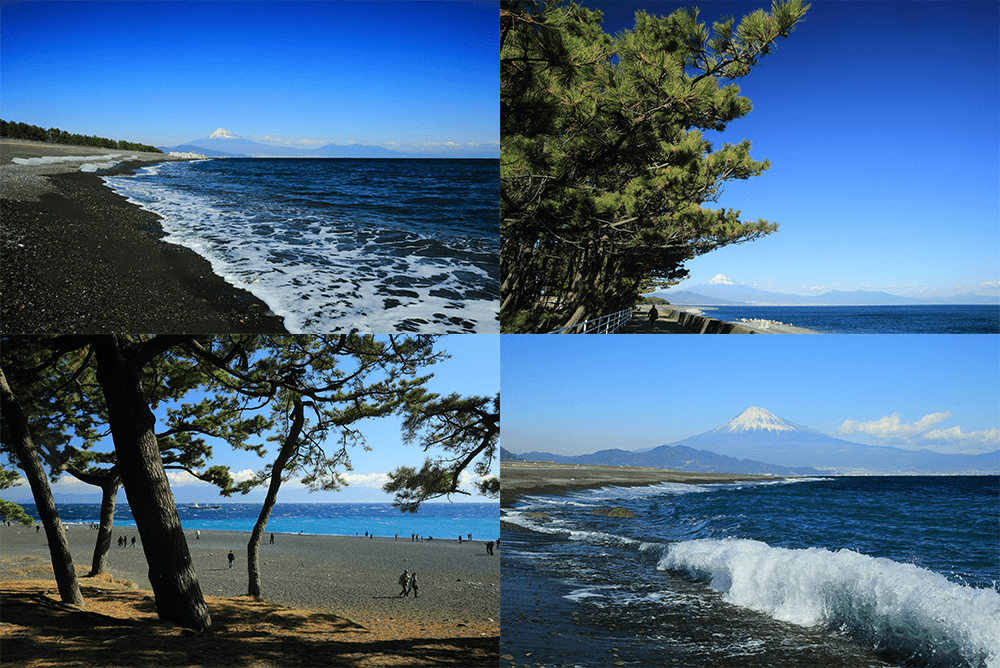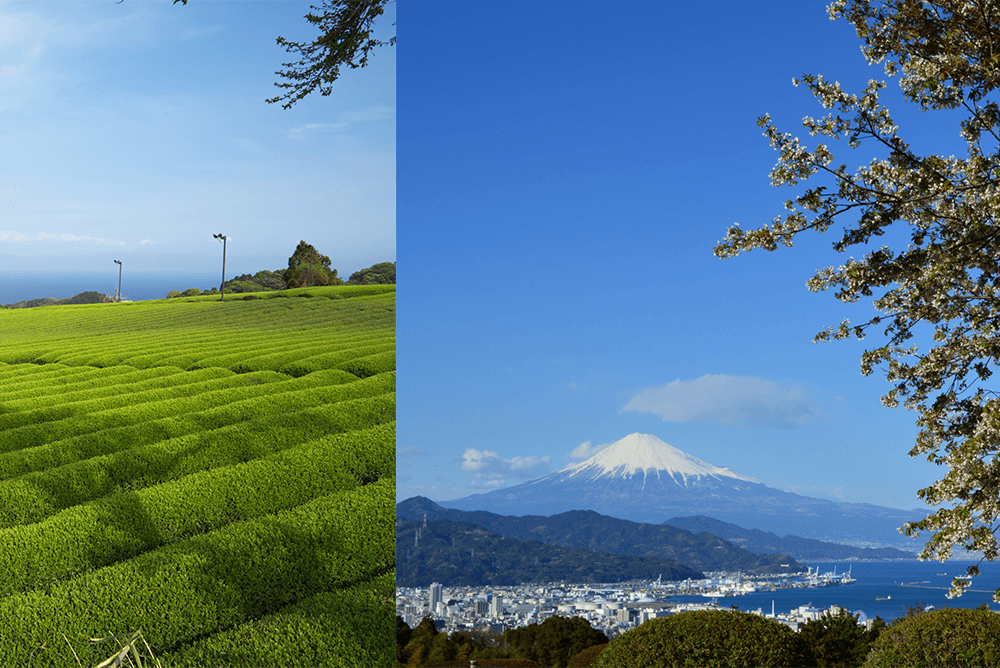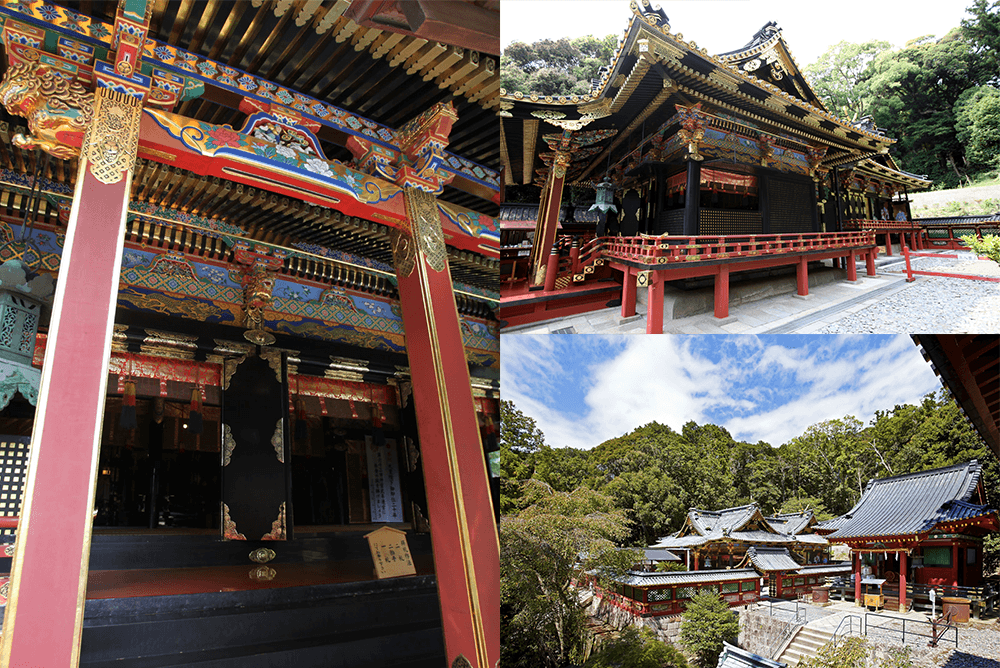5-minute walk to Shimizu Jirocho's birthplace.
The birthplace of Jirocho of Shimizu is located on Jirocho Street, within walking distance from Komatsuen.
It is one of the few remaining buildings from the Edo period.
Many famous people have visited the Jirocho’s birthplace, so why don’t you visit it?
There is no parking lot for sightseeing buses.
However, there is a parking lot for sightseeing buses at Komatsuen, so please feel free to inquire.
Shimizu Jirocho’s Birthplace is open until 16:00 (weekdays) and 17:00 (weekends and holidays), and is closed on Tuesdays.
After visiting the museum, please relax at Komatsuen.


10 minutes to Miho-no-Matsubara, a World Heritage Site.
Miho-no-Matsubara was inscribed on the UNESCO World Heritage List in 2013.
Over 30,000 pine trees grow along the 7km-long coastline, making it one of the three major pine forests in Japan.
The view of Mount Fuji from the edge of the waves is truly breathtaking.
Fuji from the edge of the waves is truly breathtaking, and it was selected as one of the three most scenic spots in Japan in 1916.
Shizuoka Convention & Visitors Association website
Miho-no-Matsubara is easily accessible by car.
Please come and visit us.
Nihondaira, a must-see sightseeing spot in Shizuoka, is a 15-minute drive away.
Nihondaira originates from the legend of Yamatotakeru no Mikoto.
Fuji, Shimizu Port, and the city of Shimizu can be seen from the 307-meter-high hillside, which has been awarded first place in various categories of the 100 best sightseeing spots in Japan.
Fuji, Shimizu Port, and the city of Shimizu, which won first place in various categories of the 100 best sightseeing spots in Japan. Not only tourists visiting Shizuoka, but also locals go to see the view that never gets old.
In the middle of the mountain is the first shrine dedicated to Ieyasu Tokugawa, Kunouzan Toshogu.
A ropeway runs from the top of Nihondaira Mountain to Kunouzan Toshogu Shrine, making it easy for anyone to get there.


Visit the holy city of Shizuoka, Kunouzan Toshogu Shrine.
Kunouzan Toshogu Shrine enshrines Ieyasu Tokugawa as its deity and Hideyoshi Toyotomi and Nobunaga Oda as its ministerial deities.
Just before his death, Ieyasu entrusted his vassals with his will that his remains be buried at Kunouzan.
Whether Ieyasu’s corpse is buried at Kunouzan Toshogu Shrine or Nikko Toshogu Shrine is not clear from historical documents.
What is certain is that Ieyasu himself wanted to be buried at Kunouzan Toshogu in his last will and testament, and the first place he was enshrined was at Kunouzan Toshogu.
Kunouzan Toshogu is easily accessible by car. Please stop by.

